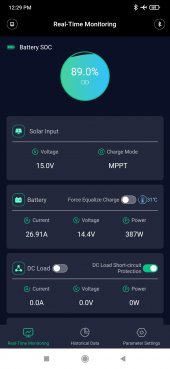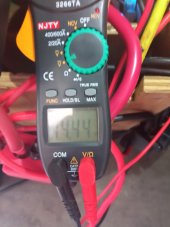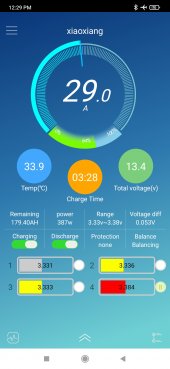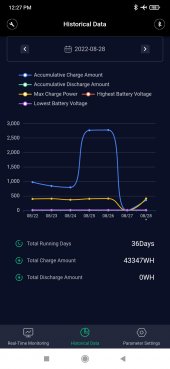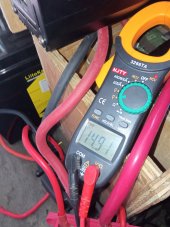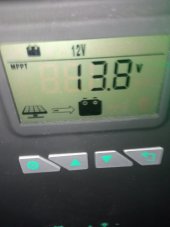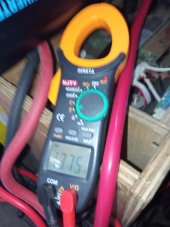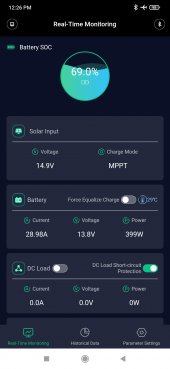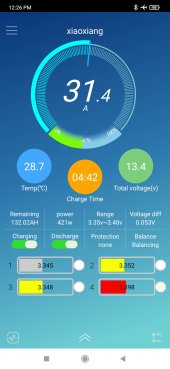( I HAVE QUALIFYING DATA )
In reply to the last episode: Well thank you for the information, I still think that LFP Lead Acid Drop In Replacement batteries are safe to use with non-programmable PWM Charge Controllers, Simple wall chargers, and other 12v charging equipment, including "dumb" equipment designed for Lead Acid Batteries, where the BMS stops the charge cycle. I highly recommend you reach out to the Manufacturers on this matter and get their official stance on this, because there is currently conflicting information being presented by several reviewers/sales reps. I have reached out to the Manufacturer of my BMS and am waiting for a reply. (It is Sunday, and I hope to have a response soon, will post the response when I get it.)
I ran my battery for years with the only way for the charge cycle to be halted was for the BMS to stop the charge cycle. And I was using a Renogy Wanderer LFP Version, that you recommended, and got a commision on. This is a non-programmable Solar Charge Controller that is designed to work with LFP, and the ONLY way the charge cycle was stopped is when my battery's BMS stopped the charge cycle. And it worked great for two years, thank you very much. And the new MPPT Charger I am using behaves the exact same way, there is no way for me to program the Charger to stop the charge cycle. Again, I have to rely on the Battery BMS to stop charging. I do this daily and it works great.
And I, in principle I agree with your Statement: "Charge controller absorption voltage should always be lower than BMS HVD threshold." This still doesn't invalidate the parameter of having the BMS stop the charge cycle. You are stating that: "Charge controller absorption voltage should always be lower than BMS HVD threshold" And, so yes, fine. But the BMS can still stop the charge cycle, and new modern Batteries and BMSs are designed as "LFP Lead Acid Drop In Replacements" - specifically; "If you are using
any charger that is 14.4 or 14.6 you can charge this battery with no issues, you do not need a Lithium specific charger or special Lithium Charge Controller." The sentiment of that statement is that the BMS will stop the charge cycle. This very point is industry standard for all
modern LFP Drop In Replacements. The BMS is designed to stop the Charge Cycle, this is a blanket statement - this does not cover out of spec settings.
Agreed.
Cringy crimp did have electrical tape on it, but yea, it's a cringy crimp, though it is safe, and within spec. Grammar & Punctuation notwithstanding, thank you for your personal jab into my typing and communication skills, COVID did mess up my brain slightly, and I have noticed that when I am typing a long text, sometimes I forget to use conjunctions, or I use
have instead of
has, etc before I proofread, and after I post, and reread what I just said, I see things that my brain was trying to say, but my clickity click typing fingers somehow managed to omit, or in some cases, use an entirely incorrect word!? So, yes, but overall the concept and message is conveyed. And for Some Reason, Every other Word has to be Capitalized! lol
"Charge controller absorption voltage should always be lower than BMS HVD threshold." Again, conforming to Standard Industry Parameters, I agree with this, BUT; in my post regarding using "Higher Allowable Voltage Limits" to get the most out of your Solar System, I do crank up the voltages beyond Industry Standard. I explain my configuration,
I outline and qualify the setup, the details about the battery and my MPPT Controller, I discuss the issues I was running into and I present my solution. And by using the BMS to stop the charge cycle, instead of the MPPT Charge Controller throttling down half way through the charge and not giving all available amps all the time - because of its logic, designed to be overly cautious, and to throttle down towards the end of the charge cycle, and to NEVER go above the Industry Standard HVD Threshold, the Charge Controller was literally tripping over itself and throttling, only giving me ~20 Amps out of the available 30 Amps. I cranked up the allowable voltages, turning off the Boot Timer, and fully opening up the "Allowable Voltages" to 15.2v. The Controller never actually achieves those high voltages, and under load it is usually in the low 14s, 14.0/2/4 etc. And most importantly, it doesn't trip over itself and throttle, it allows all available current all the time. I rely on my BMS to not only stop the charge cycle, but to also do all those other things it's designed to do like: Over Current, Over Voltage, Reverse Polarity, Low Voltage Disconnect, etc... And I explicitly state repeatedly in my post: MY BMS WORKS. (And we are talking about sub 40A charging rates, well below the industry acceptable 50/100 Amp Current Rating, as state in the post)
Okay. I
originally set the settings to 14.8/14.8/14.8 & 14.7. I guess you could call this the tippy top limit of what is allowable as "Industry Standard" - and at these settings the MPPT Controller did not trip over itself or throttle, but
I threw caution to the wind and said: "(After extensive research, I ended up bumping the settings from 14.8 to 15.2/15.2/15.2/15.0 - but I did not see any increase in Amps, but based on my research I decided 15.2 would be plenty safe, and my actual charge controller would never be able to hit that voltage anyway, and if it did, at peak peak peak for a brief second, it would only be for a brief second... and would be totally safe...)"
. - "And, that is how you get the Maximum Amps out of your Solar System, you allow the Charge Controller Higher Voltage Limits, and you turn off "EQ" and Boost Charge Timer, etc and you just allow your MPPT Charger to Send ALL available Amps/Current to your Batteries!" - The Planet is stuck...

diysolarforum.com
I will now retract that move to higher controller limits because: Good News Everybody! I have the results of the Wire Upgrade!
I will now drop down from 15.2/15.0, back to 14.8/14.7 and I will still use my BMS to stop the charge cycle. (EDIT: My BMS High Voltage Disconnect is 14.55) And, even with the crappy (should be banned from import) wire, I was NEVER able to hit voltages higher than 14.8...
First Image is of the Battery BMS App Voltage: 13.4v (31 Amps Baybe! Highest Average Amps Seen.
Old Wire WAS CRAP!)
Second Image is of the Charge Controller App Voltage: 13.8v - Still a large delta, but much better.
Third Image is the Battery Voltage at the Busbar/closest to "Terminals I could get: 13.53v
Fourth Image is the Charge Controller Voltage at the Terminals: 13.75v
Fifth Image is the MPPT Screen Reading: 13.8v
Sixth Image is PV Input Voltage at Charge Controller Terminals: 14.91v
Seventh Image is the Daily Historical Data, there is a dip at the beginning of the week that is not real. The real numbers daily are ~2,000/3000 WH Daily as seen in the last few days of the data set.
Eighth Image is how my MPPT is currently configured,
and as I said I will drop them to 14.8/14.7v
There is still a higher than expected, delta from the Charge Controller to the Battery. People in this forum have stated that any delta higher than a .5v deviation is bad. I completely disagree.
Literally, the title of this thread is
"Your Charge Controller "Charges" the line between your Battery." (That Thread is locked)
I still stand by my assertion, and theory aside, I have now asked for other people to provide real world data. I have provided my setup, configuration and all relevant data, with included pictures. I am asking others to do the same, can you help with this. My system configuration is in the post below (or above?), you have the equipment and knowhow to run the real world test. And based on how many people insisted on chiming in on this conversation,
there should be at least several other people with comparable hardware who can take measurements of their own system, and show that what they are saying exactly how their own system works. As it stands not a single person has bothered to show their measurements.
No one is willing to put the work in to get real world data to back up the claim that: "The ONLY difference you should have between the OUTPUT terminals of the charge controller and the BATTERY terminals would be the voltage drop (resistance) of the cable connecting the two. If that drop (resistance) is too high, there IS something wrong with your system."
And that is why I am basically saying;
PROVE IT - I showed you my system, now you show me yours. My VERY point is that, you too, will see more Voltage Delta than just the resistance of the wire. As is clearly shown in my case. Yes the wire was bad, but even with the new High Quality 8AWG Thin Strand Tinned Silicon Cable, I am still seeing a Voltage Delta that would be considered too high. I believe this is normal. Prove me wrong by running the same tests on a comparably configured system as outlined above.



